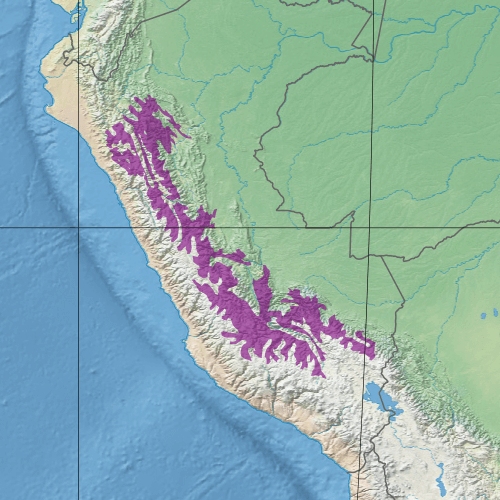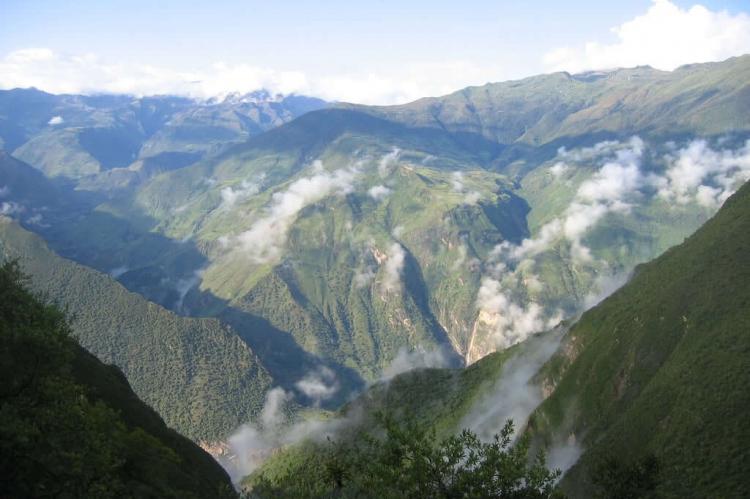Peruvian Yungas: Biodiversity Oasis in the Andean Highlands
Nestled along the eastern slopes and central valleys of the Peruvian Andes, the Peruvian Yungas ecoregion emerges as a biological treasure trove. This sub-tropical montane region, characterized by its deciduous and evergreen forests, contributes significantly to the rich biodiversity of the Neotropics.
Peruvian Yungas
Biodiversity Oasis in the Andean Highlands
Nestled along the eastern slopes and central valleys of the Peruvian Andes, the Peruvian Yungas ecoregion emerges as a biological treasure trove, spanning approximately 188,735 square kilometers (72,870 square miles). This sub-tropical montane region, characterized by its deciduous and evergreen forests, contributes significantly to the rich biodiversity of the Neotropics.
Geographical Overview
Encompassing a vast expanse from northernmost to southernmost Peru, the Peruvian Yungas ecoregion is situated along the sub-Andean strip, parallel to the Andes' eastern range. This mountainous region, marked by steep and rugged terrain, exhibits dramatic variations in altitude, ranging from high plains to precipitous valleys. The intricate geography gives rise to unique microclimates, further enhancing the region's ecological diversity.
Vegetation Mosaic
The Peruvian Yungas boasts an intricate mosaic of Andean montane vegetation types, including montane forests, premontane and lowland forests, dry forests, and high-elevation woodlands. This diverse vegetation supports various plant and animal life, creating a dynamic and thriving ecosystem.
Climate and Altitudinal Variation
Altitudes within the ecoregion vary dramatically, influencing temperature and precipitation patterns. At altitudes above 2500 meters (8,200 feet), average temperatures range from 6 to 22 degrees Celsius (42 to 72 degrees Fahrenheit). Precipitation levels range from 500 to 2000 millimeters (20 to 80 inches) annually, fostering lush vegetation and contributing to the region's high species diversity.
Flora and Fauna
The Peruvian Yungas is renowned for its rich montane forest ecosystems, harboring over 3,000 plant species. The vegetation includes tree ferns, bamboo, cedar, trumpet trees, and various orchids. The altitudinal variation gives rise to distinct zones, from cloud forests with bamboo and arboreal ferns to scrublands and wet rocky thickets at higher elevations.
The ecoregion supports over 200 vertebrate species, with notable endemics like the gallito de las rocas. Mammals like shrew opossums, Kalinowski's agouti, northern pudú, and hairy long-nosed armadillo find refuge in this unique habitat. Species like the horned curassow, hummingbirds, long-whiskered owlet, and the endangered yellow-tailed woolly monkey highlight avian diversity.
Endangered Status and Conservation Efforts
Despite its ecological significance, the Peruvian Yungas faces imminent threats, earning it a nearly critically endangered status. Migratory agriculture, coca production, deforestation, selective cutting, and gradual urban development challenge the ecoregion's delicate balance. Efforts to protect this biodiversity hotspot include designated protected areas such as Cutervo National Park, Tingo María National Park, Biabo-Cordillera Azul National Park, and Manú National Park.
Conclusion
The Peruvian Yungas ecoregion, with enchanting landscapes and remarkable biodiversity, is a testament to the intricate interplay of nature and geography. Its role in preserving endemic species, fostering diverse ecosystems, and contributing to the larger tapestry of the Neotropics makes it a vital component of South America's environmental heritage. As conservation efforts intensify, the Peruvian Yungas serve as a poignant reminder of the need to balance human development with preserving these precious ecosystems.

Map depicting the location of the Peruvian Yungas (in purple).
